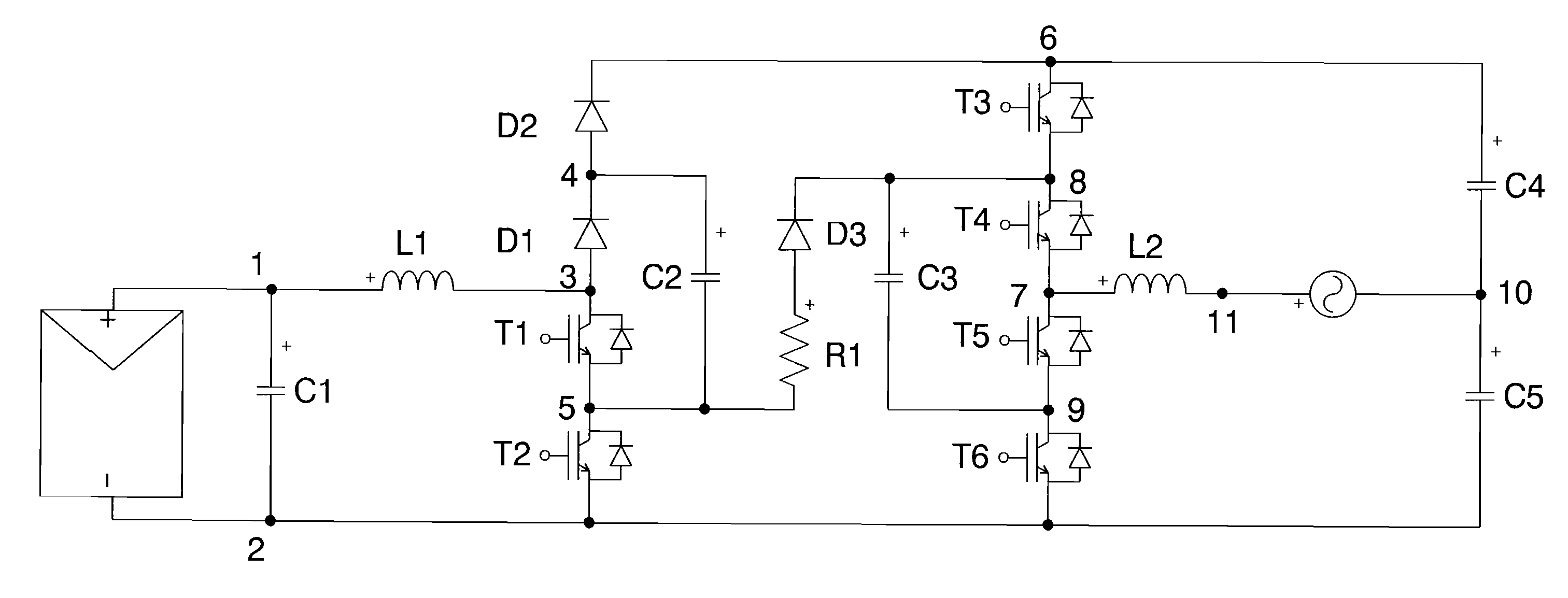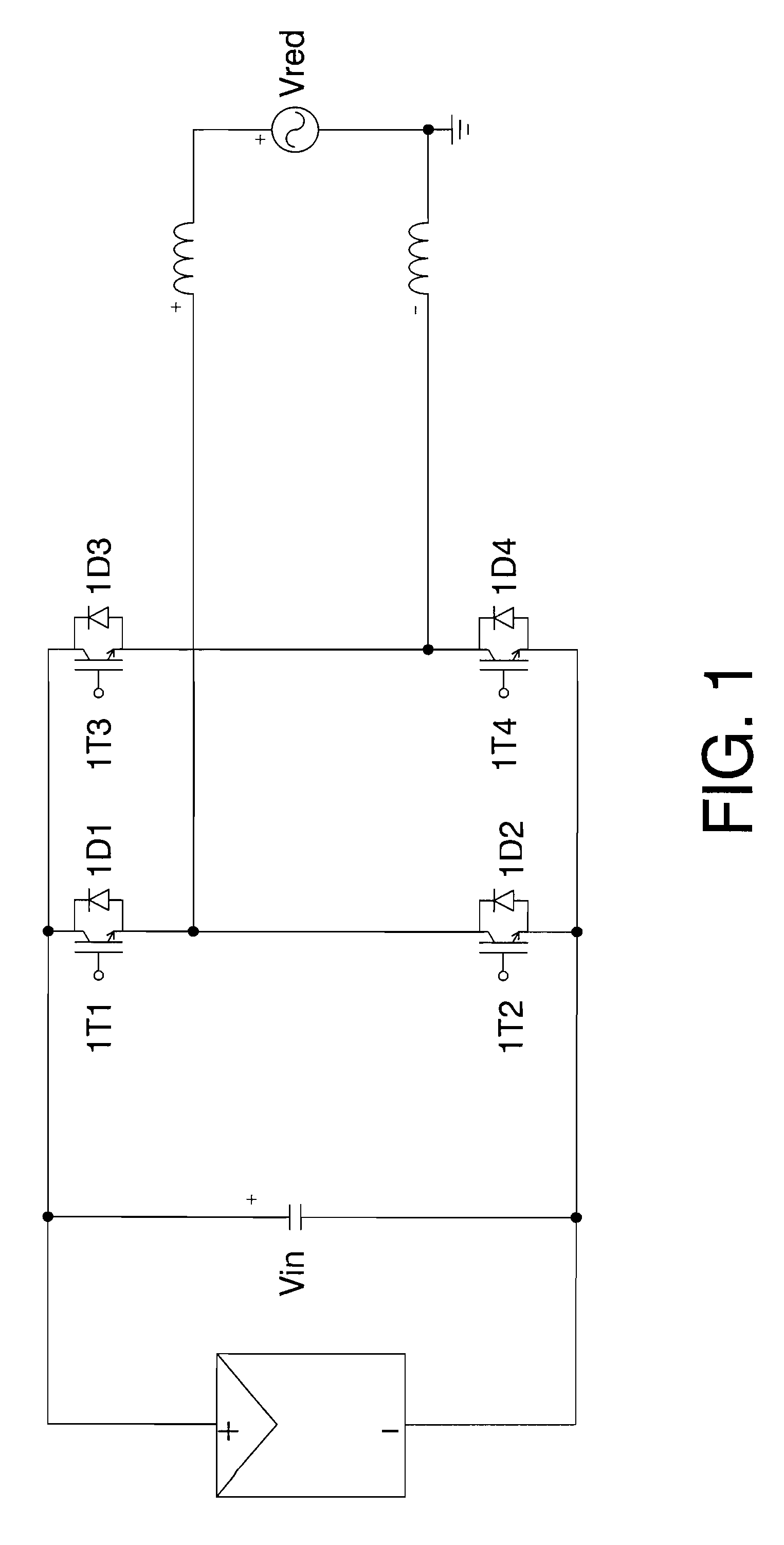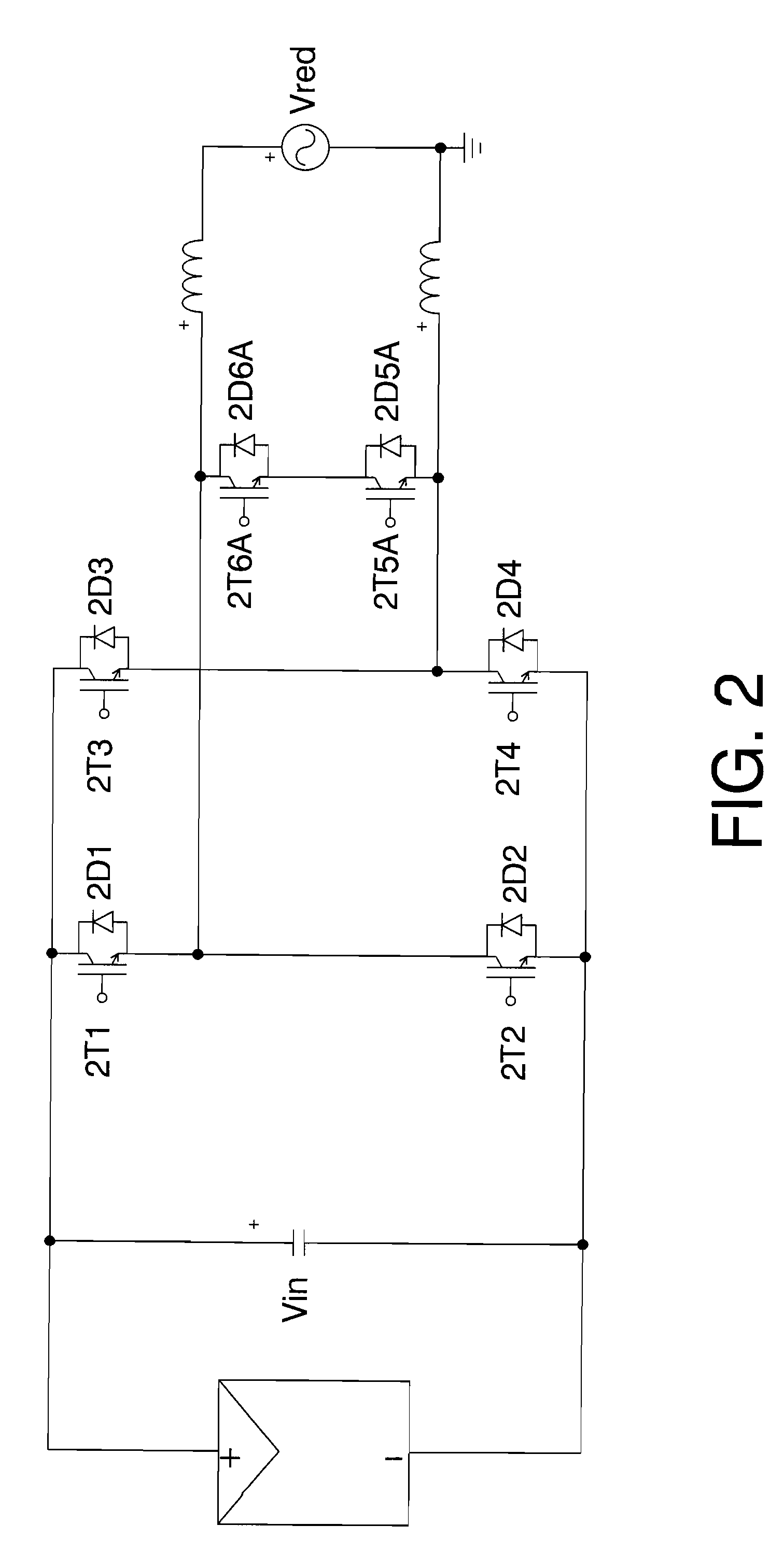Electric circuit for converting direct current into alternating current
a technology of alternating current and electric circuit, which is applied in the field of electric power generation, can solve the problems of transformer loss, increased cost of conversion stage, and increased cost of photovoltaic facilities as a whole, and achieves the effect of high yield
- Summary
- Abstract
- Description
- Claims
- Application Information
AI Technical Summary
Benefits of technology
Problems solved by technology
Method used
Image
Examples
first embodiment
[0053]FIG. 7. Provides a circuit diagram of an electrical circuit for converting direct current electric power into alternating current electric power in photovoltaic systems, according to the invention.
[0054]FIG. 8. Is the circuit of the preceding FIG. 7 showing a definition of the variables mentioned in the following section of this description.
[0055]FIG. 9. Is the circuit of the previous FIG. 7 showing the circulation of current in a first functioning mode.
[0056]FIGS. 10a, 10b, 10c and 10d. Represent the circuit of the previous FIG. 7 showing the circulation of current in a second functioning mode.
[0057]FIG. 11. Is the circuit of the previous FIG. 7 showing the circulation of current in a third functioning mode.
second embodiment
[0058]FIG. 12. Represents the circuit diagram of an electrical circuit for converting direct current electric power into alternating current electric power in photovoltaic systems according to the invention.
DESCRIPTION OF ONE OR SEVERAL MODES OF EMBODIMENT OF THE INVENTION
[0059]What follows is a description of two examples of the invention quoting references from the drawings.
[0060]Thus, the first embodiment of the circuit of the invention appears in FIGS. 7 to 11.
[0061]As can be appreciated from FIG. 7 the circuit of this first embodiment comprises:[0062]Two direct current connections, points 1 and 2, to which the corresponding source of direct current is connected;[0063]A first temporary power accumulator C1 connected between points 1 and 2;[0064]A first branch with at least one first inductance L1 connected between points 1 and 3 of FIG. 7;[0065]A second branch consisting of two switching elements in series, T1 and T2, connected between points 3 and 2 shown in said FIG. 7;[0066]A...
PUM
 Login to View More
Login to View More Abstract
Description
Claims
Application Information
 Login to View More
Login to View More - R&D
- Intellectual Property
- Life Sciences
- Materials
- Tech Scout
- Unparalleled Data Quality
- Higher Quality Content
- 60% Fewer Hallucinations
Browse by: Latest US Patents, China's latest patents, Technical Efficacy Thesaurus, Application Domain, Technology Topic, Popular Technical Reports.
© 2025 PatSnap. All rights reserved.Legal|Privacy policy|Modern Slavery Act Transparency Statement|Sitemap|About US| Contact US: help@patsnap.com



